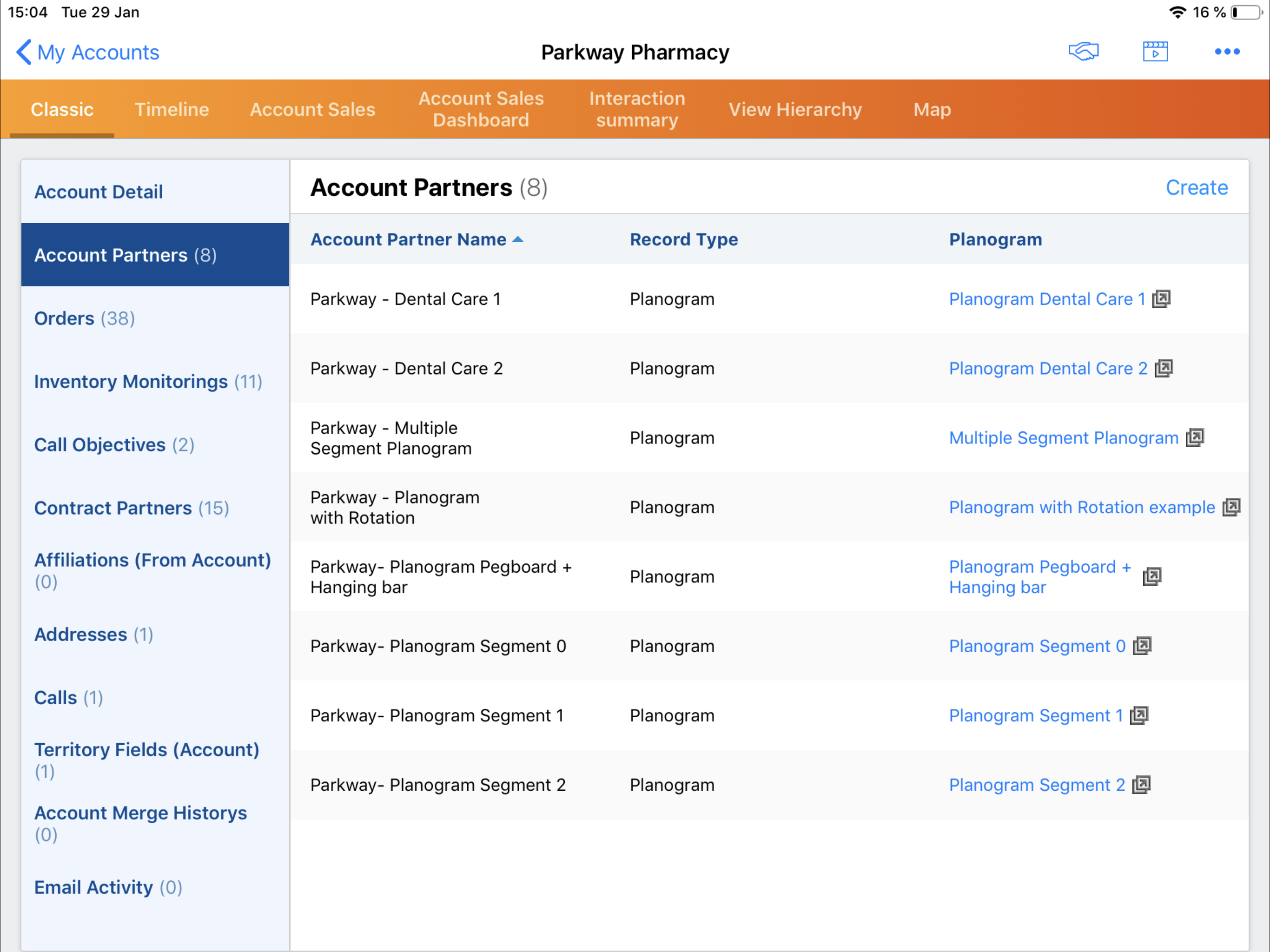Using Planograms to Monitor Inventory
- iPad
A planogram is a visual representation of a product display, including shelves, pegboards, and hanging bars, in a pharmacy or grocery store. Planograms are used by sales reps when visiting a retail customer to compare actual and contract product placement (number of facings, position on shelf, and layer). Comparing the display to the planogram identifies missing or misplaced products. This saves the user time by being able to access and compare the planogram in CRM for each customer as needed.
For example, Sarah Jones is visiting Verteo Pharmacy to check product placement and to determine if there are any products needing reorder. She compares the current display to the planogram accessed from the customer’s Account Partners page. She notes the areas of the current display that are not compliant with the contract. She uses this information to discuss corrections with the pharmacist.

Configuring the Use of Planograms to Monitor Inventory
Pre-Requisite: ensure Inventory Monitoring is enabled for administrators and users.
To enable this feature for administrators:
- Grant CRUD permission to the following objects:
- Planogram_vod
- Planogram_Line_vod
- Enable the Planogram_vod record type on the Planogram_vod object.
- Grant FLS edit permission to all fields on the Planogram_vod object.
- Enable the following record types on the Planogram_Line_vod object:
- Fixture_vod
- Position_vod
- Segment_vod
- Grant FLS edit permission to all fields on the Planogram_Line_vod object.
- Grant FLS edit permission to the following fields on the Product_vod object:
- Height_vod
- Width_vod
- Enable the Planogram_vod record type on the Account_Partner_vod object.
- Grant FLS edit permission to the following fields on the Account_Partner_vod object:
- Inventory_Monitoring_Type_vod
- Planogram_vod
- Assign the Planogram layout to the Planogram record type for all profiles. This step is optional.
Edit permission to the Inventory_Monitoring_Type_vod field on the Account Partner object should be granted if the planogram links to only one Inventory Monitoring record type. If using custom Inventory Monitoring record types, picklist values for the Inventory_Monitoring_Type_vod field must match the record type name on the Inventory_Monitoring_vod object.
To enable this feature for users:
-
Grant read permission to the following objects:
- Planogram_vod
- Planogram_Line_vod
- Grant FLS read permission to all fields on the Planogram_vod object.
- Grant FLS read permission to all fields on the Planogram_Line_vod object.
- Grant FLS read permission to the following fields on the Product_vod object:
- Height_vod
- Width_vod
- Grant FLS read permission to the following fields on the Account_Partner_vod object:
- Inventory_Monitoring_Type_vod
- Planogram_vod
- Enable the Planogram_vod record type on the Account_Partner_vod object.
- Grant FLS read permission to the Inventory_Monitoring_Type_vod field if Account Partner is only specific for some Inventory Monitoring record types.
-
Activate the Planogram_vod and Planogram_Line_vod VMOCs.
Grant edit permission if the user can create relationships between Accounts and Planograms.
Using Planograms to Monitor Inventory
Users can access a planogram from the Inventory Monitorings or Account Partners page if a planogram is associated to the account.

If more than one planogram exists for an account, users can select from a list on the Inventory Monitorings page. The default planogram displays. If a default planogram is not set, the last updated planogram displays.



